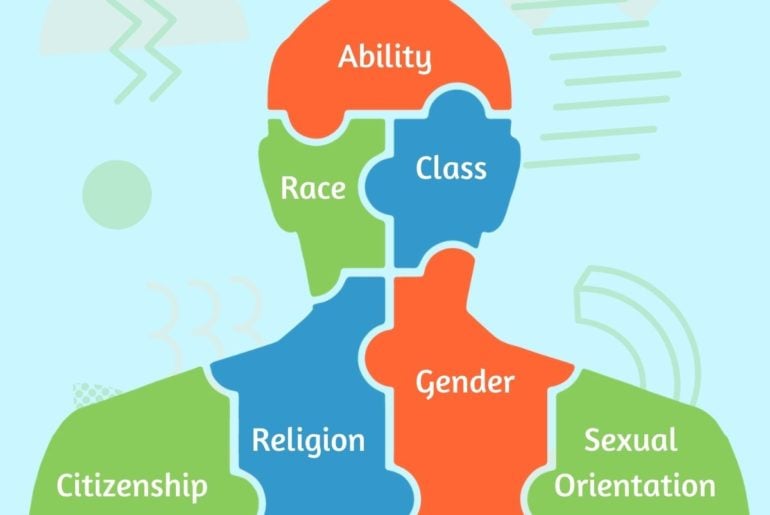To understand identity, it’s important to understand intersectionality — or the combination of different identities that make up a whole individual. Understanding intersectionality helps your child explore and develop their own identity, and helps them support others.
Privilege and intersectionality are big concepts to grasp, even for grown-ups. It’s never too early to start having these conversations, so here’s a simple way to break down these concepts for your kids.
You can use this puzzle metaphor to simplify a complex topic and explain it to your kids! Just like a puzzle, each person is made up of lots of different pieces, like their race, gender, and religion. It’s impossible to understand the full picture until you put all the pieces together.
What are identities?
Identities are different aspects of each of us that we’re all born with or develop naturally over time. Some important identities to recognize include gender, race, class, ability status, citizenship status, and religion. To some degree, we all have these identities in one form or another.
What is privilege?
It’s also important to understand privilege, which is the advantage you get because of a part of your identity. For example, a person with no disabilities has privilege because it’s easier for them to get around in public compared with many people who do have disabilities. Privilege can be hard to recognize, because people expect it to show up as obvious advantages or opportunities. However, privilege is often the absence of an obstacle that other people face, rather than the presence of an advantage.
What is intersectionality?
Intersectionality is the combination of different identities that make up a whole individual. Just like a puzzle, each person is made up of lots of different pieces, like their race, gender, and religion. It’s impossible to understand the full picture until you put all the pieces together!
Family challenge!
See how many identities your child can think of that apply to your family! Then, talk about how they affect each other, how others might see you, and what advantages or disadvantages come with those identities.







